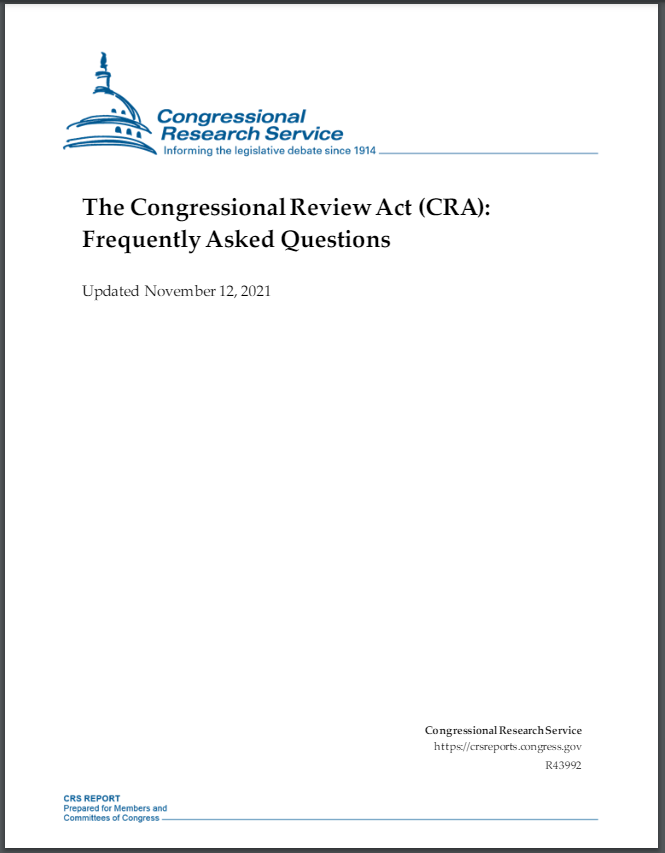
The Congressional Review Act was enacted with bipartisan support in 1996. This statute establishes a process for Congress to vote to block the executive branch from adopting a regulation. As the Congressional Research Service explains:
“Under the CRA, before a rule can take effect, an agency must submit a report to each house of
Congress and the comptroller general containing a copy of the rule; a concise general statement
describing the rule, including whether it is a major rule; and the proposed effective date of the
rule. After receiving the report, Members of Congress have specified time periods during which
they must submit and act on a joint resolution of disapproval to take advantage of the CRA’s
special “fast track” procedures. If both houses pass the resolution, it is sent to the President for
signature or veto. If the President were to veto the resolution, Congress could vote to override the
veto.”
Congressional Research Service, The Congressional Review Act (CRA): Frequently Asked Questions, Congressional Research Service, Report R44392, November 12, 2021.
Stay in the know about our news and events.